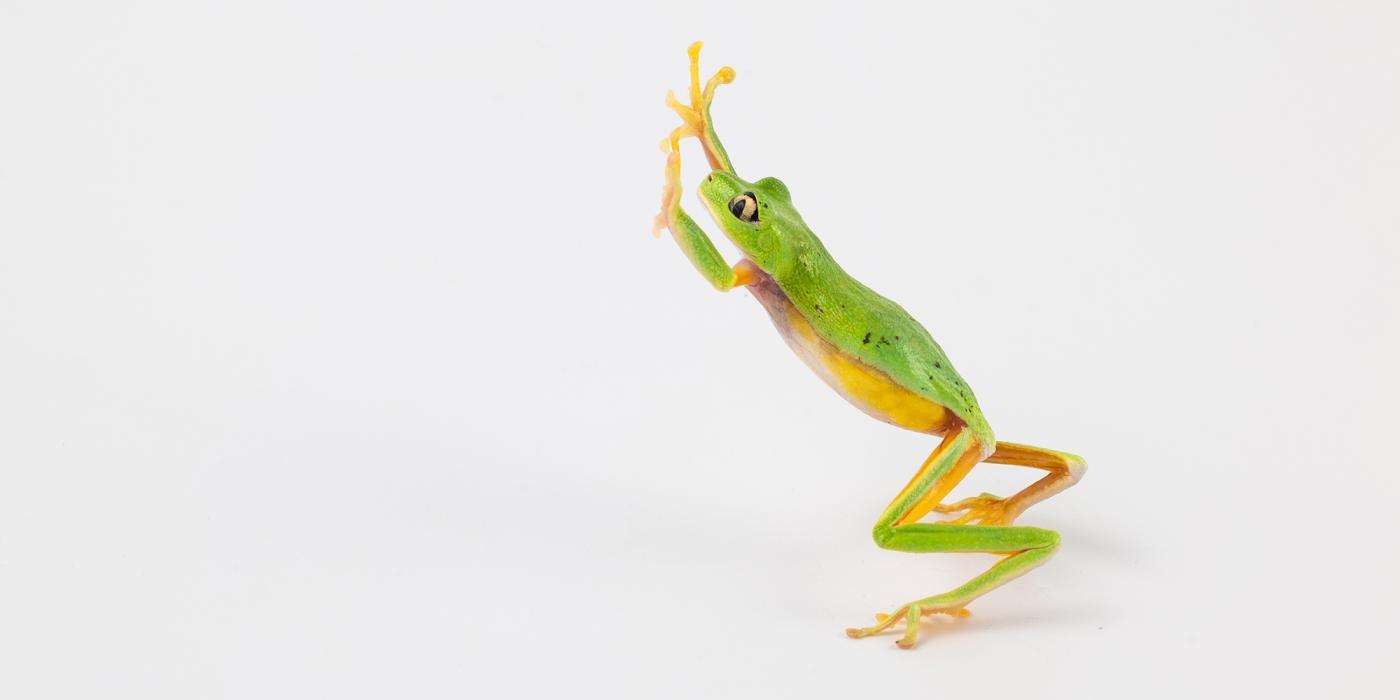Featured Creature: Titi Monkeys

Meet Henderson and Kingston — two white-eared titi monkeys that live in Amazonia’s rainforest habitat! Get to know them in this Q&A with animal keeper Donna Stockton.
What do you find so endearing about titi monkeys?
Their wonderful and loud vocalizations! When Henderson and Kingston are trying to locate one another in the rainforest, they make several unique sounds. Henderson’s call often begins as a high-pitched “squeak” and transitions into a deeper “wok-wok” vocalization. Kingston also squeaks, but her tone is a bit softer than Henderson’s is. She has never lived in as large or noisy a habitat as our rainforest, so she is not used to making her voice travel. But, she is learning!
Titi monkey pairs will also wrap their tails together to strengthen social bonds. Although Henderson and Kingston are just companions and not a breeding pair, they still do this adorable behavior.
How do you tell Henderson and Kingston apart?
Henderson’s fur is more milk chocolate in color, whereas Kingston has frosty white fur on her face and lower body. She is also slightly longer and leaner than Henderson is.

What are their personalities like?
Henderson has a friendly personality and he shows an eagerness to learn when it comes to training. However, when he is not in a training session, Henderson is less willing to work for his food. To encourage him to forage, we put part of his daily diet into puzzle feeders. Some of these toys require problem solving to reap the rewards. Henderson seems to prefer the “easier” feeders — ones he just has to spin or shake in order to access his meal. Hands down, his favorite foods are grapes and nuts.
Kingston, on the other hand, seems to like the puzzle feeders that are a bit more complex — especially ones where she has to take something apart in order to get the treat. She is patient and observant, but also very clever and sometimes sneaky. Keepers have to watch their treat pouches, because she will steal food from them when we aren’t looking! She also likes grapes and has a taste for boiled eggs, too.

Does Kingston participate in training?
Yes! All of the training we do with the titi monkeys involves positive reinforcement. When they do the behaviors keepers ask for, they receive one of their favorite foods as a reward. If they choose not to participate, they have the option to walk away without consequence.
Kingston took to training right away. She will readily climb onto the scale so that we can routinely record her weight. Along those same lines, we want to desensitize Kingston to our touch on her arms, legs and belly so that we can assess her body condition for anything out of the ordinary that needs medical attention.
One of the behaviors we are working toward is teaching her to “station,” or stand still, in a certain area. This will come in handy when we are training Henderson and need her to be in an area where she will not distract him.
Eventually, we want her to be comfortable stationing in a crate. That way, in the event she ever needed to go to the veterinary hospital, she would associate the crate with a positive thing (food) and would know it as a safe, familiar space — making the experience overall less stressful.
Got any tips for spotting them?
Henderson and Kingston are usually easy to spot in the rainforest habitat throughout the day. Even when they rest, it is usually in an area where they are visible to visitors. Their favorite hangout spots are near the stairs where visitors first enter the rainforest exhibit. Look in the chicle and star apple trees adjacent to the window, or in the cocoa tree that is next to the pool.
Come watch them roaming, feeding, playing, resting, grooming and chasing birds in the forest — they are super entertaining!
This story was featured in the August 2019 issue of National Zoo News. On your next visit, meet the Zoo’s animals and their keepers throughout the day during daily keeper talks.
Related Species:



